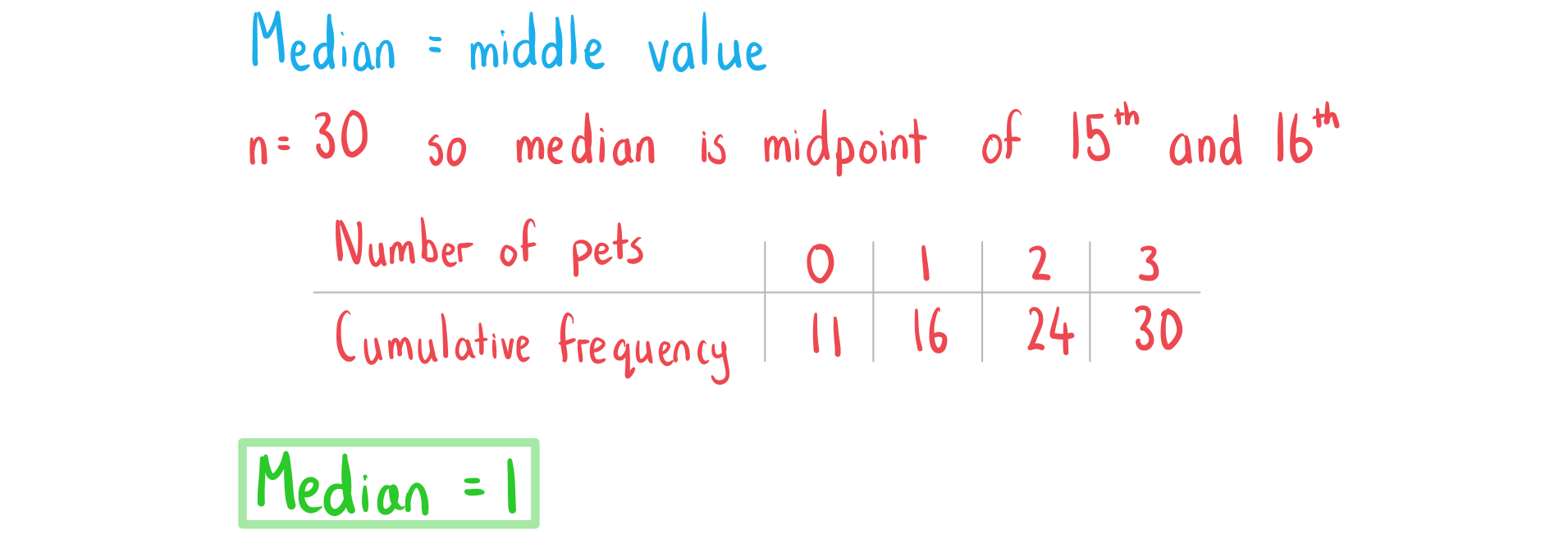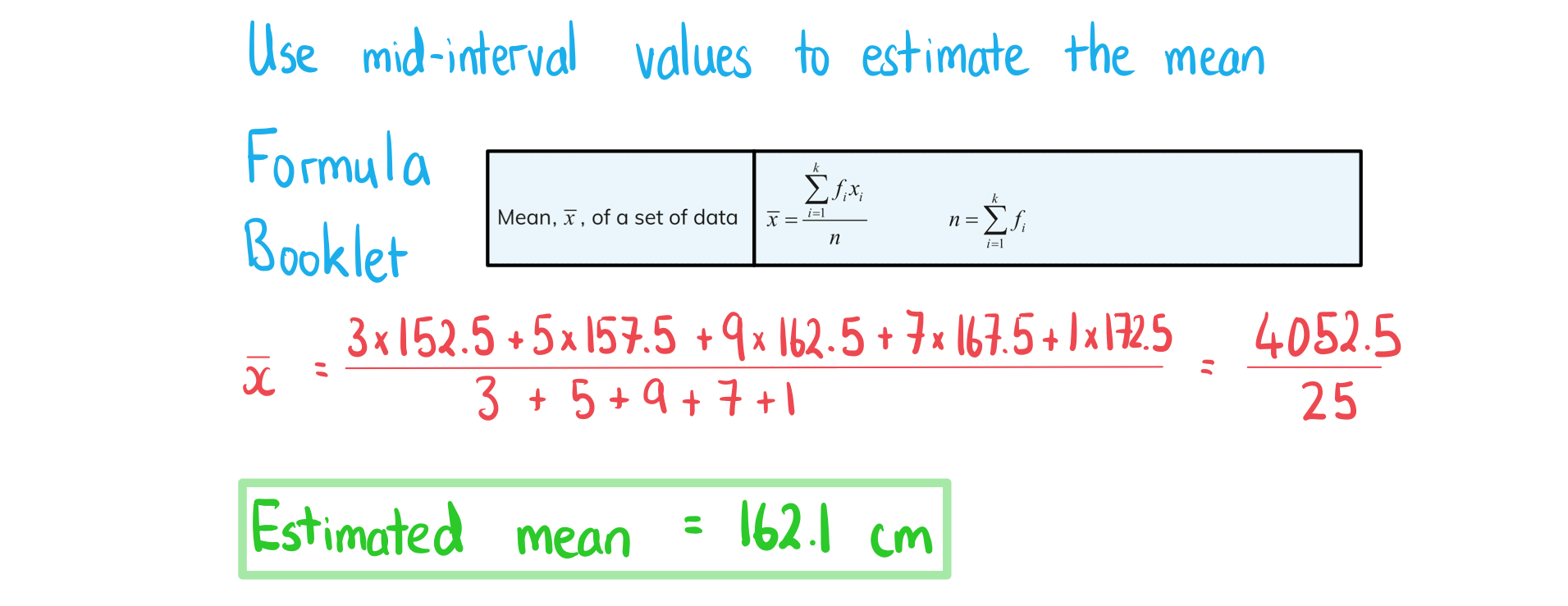Ungrouped Data
How are frequency tables used for ungrouped data?
- Frequency tables can be used for ungrouped data when you have lots of the same values within a data set
- They can be used to collect and present data easily
- If the value 4 has a frequency of 3 this means that there are three 4’s in the data set
How are measures of central tendency calculated from frequency tables with ungrouped data?
- The mode is the value that has the highest frequency
- The median is the middle value
- Use cumulative frequencies (running totals) to find the median
- The mean can be calculated by
- Multiplying each value xi by its frequency fi
- Summing to get Σfixi
- Dividing by the total frequency n = Σfi
- This is given in the formula booklet
-
- Your GDC can calculate these statistical measures if you input the values and their frequencies using the statistics mode
How are measures of dispersion calculated from frequency tables with ungrouped data?
- The range is the largest value of the data minus the smallest value of the data
- The interquartile range is calculated by
-
- The quartiles can be found by using your GDC and inputting the values and their frequencies
- The standard deviation and variance can be calculated by hand using the formulae
- Variance
-
- Standard deviation
-
- You do not need to learn these formulae as you will be expected to use your GDC to find the standard deviation and variance
- You may want to see these formulae to deepen your understanding
- You do not need to learn these formulae as you will be expected to use your GDC to find the standard deviation and variance
Exam Tip
- Always check whether your answers make sense when using your GDC
- The value for a measure of central tendency should be within the range of data
Worked example
The frequency table below gives information number of pets owned by 30 students in a class.
| Number of pets | 0 | 1 | 2 | 3 |
| Frequency | 11 | 5 | 8 | 6 |
Find
a)
the mode.

b)
the median.

c)
the mean.

d)
the standard deviation.





